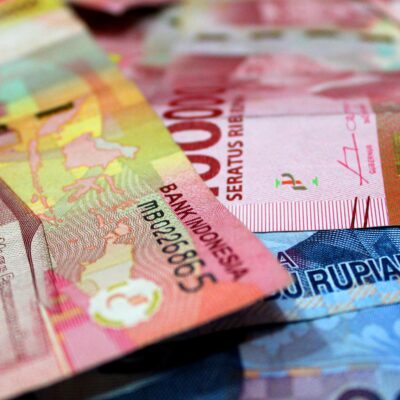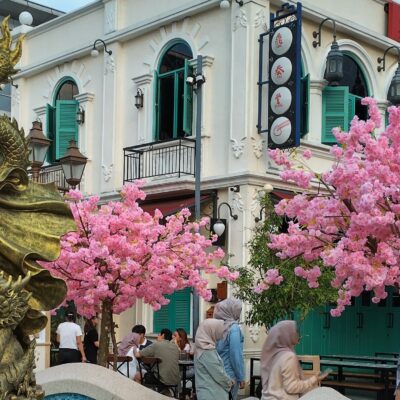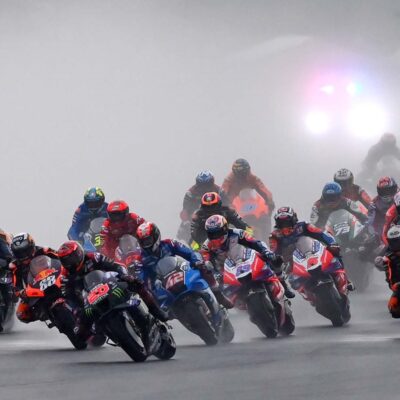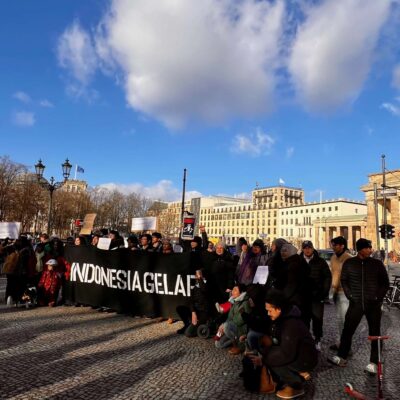The Indonesian genocide of 1965 is yet to be fully resolved and will continue to haunt Indonesia if no attempts are made to reconcile with the past.
The genocide involved large-scale killing of members and supposed supporters of the Indonesian Communist Party (PKI) and its affiliated organisations. The state argued it was a necessary response to an attempted coup by a group called ‘the 30th September movement’. The actions initiated by General Suharto, to oppose the 30th September coup plotters, led to him replacing Soekarno as President, and the widespread massacres of those who were members of the communist party or regarded as sympathetic to it.
When Joko Widodo (Jokowi) came to office as Indonesia’s President in 2014, there was much hope for progress towards reconciliation that would include holding the state to account for its failure to protect civilians in 1965 and 1966 and to support further investigations into what happened in local communities. In January 2023, Jokowi formally acknowledged and expressed regret for several cases of gross human rights violations during and since the 1960s, including the genocide of 1965 and the anti-Chinese attacks of 1998, but he failed to implement actions to bring the perpetrators to justice. Reconciliation measures with the past such as truth-telling and financial compensation remained merely political rhetoric to the end of his era in 2024.
Prabowo Subianto has been elected to lead Indonesia (2024-2029), and hopes for a reconciliation with the past under his leadership appear bleak. Prabowo himself has made it clear that the priority of his government is to focus on economic development to realise Indonesia’s ambitious goal to become a high-income country and the world’s fifth-largest economy by 2045. Politically, revisiting Indonesia’s dark past could be toxic for his leadership and stability, especially in the context of his suspected involvement in gross human rights violations such as the case of the activist Munir Said Thalib in 2004, the 2001 massacre in Aceh at the Bumi Flora oil palm plantation, and in East Timor during Indonesia’s occupation (1975-1999).
Since the genocide of 1965, researchers have uncovered substantial evidence of the military’s central role in initiating and implementing the violence. This article examines research on the violent events of 1965 that took place in Flores and the surrounding islands, a mostly Catholic area in Eastern Indonesia, and the locus of my PhD study which was an autoethnographic analysis of cultures of fear amongst Eastern Indonesian Catholics.
Who were the victims and who were the perpetrators?
The post-Suharto academic research in Indonesian language about Eastern Indonesia foregrounds a concern to outline who was killed in 1965–66, by whom and for what reasons, and how many people were killed. Thus, for instance, the introduction to a key work published not long after the fall of the New Order—Berpastoral di Tengah Badai: Potret Gereja Maumere 1956–1969—(trans. Ministry in the Midst of Rage: The Portrait of the Church in Maumere 1956-1969), published in 1999 by Ignas da Cunha and others, states that in the Maumere region alone, between February and May 1966, there were between 800 and 2,000 deaths. Mery Kolimon and colleagues estimate the death toll for the whole province of Nusa Tenggara Timur at 3,000 people.

Catholic Church Ledalero Maumere Flores January 2024. Credit: Author.
There is general agreeement that in Flores the victims of 1965–66 were mostly local Catholics, and the executioners (algojo) were also local Catholics. These killings took place under the direct instruction of the Indonesian Army, and were locally known in Flores as KOMOP (Komando Operasi: Operational Command) as part of the KOPKAMTIB (Komando Operasi Pemulihan Keamanan dan Ketertiban, Operational Command for the Restoration of Security and Order). Although it is clear that both the victims and the perpetrators of the killings in Flores were Catholics, some authors such as Ignas da Cunha et.al (1999) have suggested that the local Church was sympathetic towards the communists during and after the military (KOMOP) operation, from February to May 1966. They also mention the division within the local Church on the actions of the KOMOP. In my view, this division was perhaps partly due to the realisation that some people were both communist and Catholic. The local Catholic hierarchy, at the time, advised Catholics to be careful of political influences and that anyone who entered the community must immediately be reported to the parish priests.
Amongst those researching the killings in Flores and the neighbouring islands (including Adonara, Solor and Lembata) there is thus little agreement about whether or not those killed were actually members or affiliates of the PKI; or, if they were, about whether those killed were orthodox believers in Marxist doctrines, or advocating the overthrow of the government. The case of the man named Buang Duran is perhaps the best documented example of a local leftist victim of the violence. The account by anthropologist R.H. Barnes makes clear that Buang Duran was a complex figure whose ideas contained many elements other than secularist communism.
Scholars Paul Webb (1986), Steven Glen Farram (2010) and R.H. Barnes (2003), in their works on Easterm Indonesia, suggest that support for the PKI in the region grew in the years before the attempted coup in 1965 and the subsequent genocide. Webb, in particular, claims that in some cases both Christians and communists tried to influence each other through ‘conversion’ and recruiting new members. The result was that some Christians became members of the PKI on the basis that, for them, communism was not necessarily against religion and God. This challenges the orthodox view of the theist-atheist dichotomy. It seems simplistic to assert that the communists were atheists and were therefore against religion. The PKI problem was then much more than simply about God and religion. The fear of communism at the local level was not a clear-cut fear of a secularist political movement, but may have had much more to do with local fears, especially those associated with perceived supernatural danger, as discussed in my PhD thesis.
More recent literature, such as a co-edited book by Katharine McGregor, Jess Melvin, Annie Pohlman (2018), and works by Jess Melvin (2018), Geoffrey B. Robinson (2018), and John Roosa (2020), have focused on unpacking the multi-layered political, social, and cultural forces that drove the bloodshed, and its lasting impact on Indonesian society. The authors highlighted the involvement of the Indonesian military and various paramilitary groups in a systematic purge of alleged communists and anyone suspected of sympathising with them. Recent works also explore the role of Suharto’s rise to power in orchestrating the genocide, which allowed for the demonisation of the PKI and communism as the pretext for the genocide, often with little to no evidence of actual communist affiliation. New archival research and declassified documents have provided deeper insight into the political machinations of the time, revealing how the genocide was not only an act of political repression but also an effort to cement a new political order under Suharto’s military-dominated New Order regime (1966-1998).
Melvin, in her groundbreaking research, The Army and the Indonesian Genocide: Mechanics of Mass Murder (2018), particularly examines how the Indonesian military, under General Suharto, orchestrated a highly coordinated and systematic campaign of violence. She argues that the genocide was not merely a spontaneous outburst of anti-communist fervor but a carefully planned operation that relied on military structures, paramilitary organisations, and local militias. Melvin’s key contribution is her analysis of the logistical and organisational mechanisms of the massacre, showing how the military used local networks to identify and eliminate targets with extraordinary efficiency.
What was the nature of the Church’s involvement?
In post-Suharto academic research, the exact nature of the involvement of the Catholic Church in Flores in the events of 1965–66 is a matter of controversy, or of ambiguity at least. The account of scholar Ignas da Cunha and his co-authors seems to acknowledge a degree of guilt felt, and division among, the local Catholic authorities about their involvement (direct and indirect) in the killings, and a realisation that the only way to move forward is to reconcile with the past by acknowledging the failure of the local Church to protect communities from the violent and deadly military operations. It could also be argued that the Church’s sense of guilt reflects the trauma felt more broadly in the Catholic community. Da Cunha and his fellow writers claim that, notwithstanding much fear for their own fate, some Catholics tried to protect some of the alleged communists by hiding them from military arrest and sought to defend the human rights of the PKI prisoners and their family members. In Flores, there is also information that some church buildings, seminaries and presbyteries were used as places to hide suspects who could become victims of the military operation. This suggests that local people knew who in the community had association with the PKI and its affiliated organisations and that they took steps to defend them. It also suggests that the Church took some steps to protect alleged communists.
However, the Catholic Church did not directly challenge the Army, as noted by historian Gerry van Klinken in his book ‘Murder in Maumere’ (2013), even in religious matters. In some instances on Flores, Catholics who were accused of being communists had their religious rights to receive the sacrament of confession and the Last Rites denied to them by the Army. Academics Otto Gusti Madung and John Mansford Prior (2015) mention, by way of an example, a local victim named Jan Djong. He was arrested and detained due to his association with the PKI: Jan Djong was a district leader (Camat) and a former representative of the PKI in the DPRD (the council of the local peoples’ representatives). Jan Djong was tortured and died in a detention house (rutan: rumah tahanan) in Maumere on 1st March 1966. The Army rejected the victim’s request for the last rites and absolution of sins from a Catholic priest, Father Franz Conelissen SVD, and he was left to die in prison without receiving the comfort of the last rites.
Questions about the wider relationship between the Catholic clergy, and the activities of the military, and how far the Catholic Church assisted in the campaigns to apprehend suspected communists, have been addressed by a Catholic priest of Dutch origin, Father Nicolaas Jozef Boumans SVD, in his autobiography (2005). He mentions that the military’s presence on Flores was strongly felt and disturbing. The Indonesian Army undertook ongoing interrogations of certain priests and brothers concerning the possible involvement of Catholics in hiding the alleged communists. Father Boumans notes that many, including himself as a foreign priest, became a target of suspicion by the Army. The fact that the foreign priests were particularly targeted in the context of Flores, in my view, raises issues of identity politics and the often correlative dichotomies of domestic (insiders) versus foreign (outsiders); communists versus non-communists; theists versus atheists. Even a Catholic priest could be seen as a foreign outsider and suspected of being involved with communism.
The experience of the Catholic Church in Flores in the period is discussed by Prior, in his two-part study published in 2011. These articles discuss in detail how the local Church responded to the crisis in a pastoral sense. Prior states that after the military massacre there was a time of calm on the surface, but that underneath there was much pain and brokenness. Regarding this difficult time at the end of the 1960s, Prior notes that the Catholic priests in the Maumere area were at a loss to know what to do. In response, the Archbishop of Ende, Gabriel Manek SVD, appointed Father Hendrik Djawa SVD as the first indigenous Dean of the Ende Archdiocese. It should be noted that before this appointment was made, leadership positions within the local power structure of the Catholic Church were dominated by foreign clerics from Western nations such as Netherlands, Germany, England and the USA.
After Father Hendrik Djawa SVD was appointed Dean of the local Church hierarchy in Maumere in 1966, the local Catholics in Maumere, the second-largest town on Flores, became active members of the Partai Katolik (the Catholic Party). A small minority joined the PNI (Partai Nasional Indonesia, Indonesian National Party). According to Prior, people joined the PNI because they felt that the Catholic Party was dominated by local elites, or because they were critical and had leftist leanings. In other words, the Catholic identities of people in Flores were intensified after the killings, in part because membership of Catholic political organisations became more significant.
Undoubtedly, the Indonesian genocide of 1965, also known as the 1965 massacre, remains one of the most complex and contested events in the history of Southeast Asia. There is a growing trend in recent scholarship to focus on the long-term repercussions of the 1965 genocide, particularly its effects on memory, identity, and historical justice, as noted by scholars such as McGregor, Melvin, Pohlman (2018), Robinson (2018), and Roosa (2020). Despite the scale of the killings in 1965 and 1966, official recognition and accountability for the crimes have remained limited. Many survivors, their descendants, and human rights advocates have sought to confront the erasure of this history from Indonesia’s official narrative. Recent works, particularly by McGregor, Melvin, Pohlman, and Robinson, on the subject examine the silencing of the genocide in national discourse and the resistance efforts to recover and document the memories of victims.
Robinson, for example, in his book titled, The Killing Season: A History of the Indonesian Massacres (2018), examines a culture of impunity that allowed perpetrators to operate with little or no consequences, and the ongoing struggle for justice and historical reconciliation. Robinson emphasises the role of the Indonesian military, political elites, and foreign powers—particularly the United States and the United Kingdom—in both instigating and enabling the massacres. Robinson argues that the killings were not only a reaction to the failed coup attempt of October 1, 1965 but were also deeply rooted in long-standing political and social tensions, including the ideological struggle between communism and Islam and the military’s desire to consolidate power.
All these recent scholarly works have contributed to a growing international discourse on the importance of truth-telling in post-conflict societies and the challenges of confronting state-sanctioned violence decades after the fact. The emergence of testimony-based research and survivor-led projects is shedding light on the personal dimensions of this historical trauma, pushing the Indonesian government to reconsider its stance on acknowledging and addressing the genocide of 1965.
Conclusion
Memories of 1965–66 remain deeply held among many communities throughout Indonesia, particularly in those that witnessed the traumatic events. Clearly, it is vital for Indonesia to acknowledge the dark side of its recent past. The State of Indonesia must support an formal, open commitment to truth-telling and reconiliation about what really took place in 1965 and the subsequent years; especially since there is such a plenitude of literature about 1965, the Indonesian government could act with humility in fostering the process of reconciliation with the past in contemporary Indonesian society, and for future generations.
Reconciliation means acknowledging that the Indonesian State was responsible not only for the bloodshed of hundreds of thousands of innocent victims, but also for the ensuing discrimination and stigmatisation against the families of the suspected communists. The State’s failure to acknowledge this thus far means that the issue of 1965 will remain controversially and distressingly debatable.
Surely now, over 50 years later, reconciliatory endeavours concerning the past can be developed through a shared understanding of the historical facts and their relationship to lived experience and through acceptance of responsibility. But, will a call for accountability ever be heard? This is an important question to reflect upon if reconciliation with the past is to be made a national agenda during Prabowo’s presidency.
Main image: Catholic cemetery Ledalero, Maumere, Flores, 2024. Credit: Author.
Acknowledgement: This article is a revised chapter of my PhD thesis submitted in 2017 at the University of Melbourne. I would thus like to acknowledge the contribution of my three PhD supervisors: Dr Lewis Mayo (historian), late A/Prof Richard Chauvel (historian), and Dr Muhammad Kamal (philosopher). I found the numerous discussions with each of them very illuminating and thought-provoking. I am very appreciative and grateful for their willingness and time to journey with me. Finally, this article is dedicated to Richard Chauvel who passed away in April 2022; more than a thesis supervisor, Richard was a mentor and friend to me.




